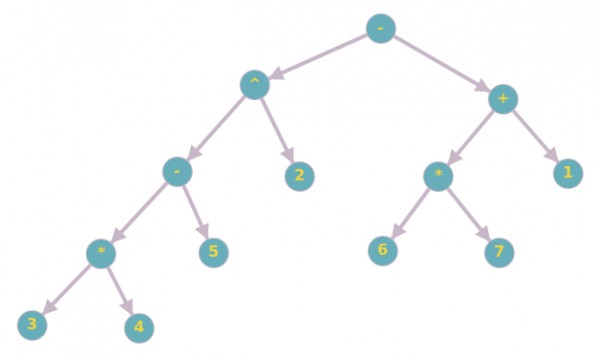$1)$ ${\fbox{3}}$ $\fbox{tos: 4}$
$2)$ ${\fbox{tos: 3*4}}$
$3)$ ${\fbox{3*4}}$ ${\fbox{tos: 5}}$
$4)$ ${\fbox{tos: ((3*4)-5)}}$
$5)$ ${\fbox{((3*4)-5)}}$ ${\fbox{tos: 2}}$
$6)$ ${\fbox{tos: (((3*4)-5)$\uparrow$ 2)}}$
$7)$ ${\fbox{(((3*4)-5)$\uparrow$ 2)}}$ ${\fbox{6}}$ ${\fbox{tos: 7}}$
$8)$ ${\fbox{(((3*4)-5)$\uparrow$ 2)}}$ ${\fbox{tos: 6*7}}$
$9)$ ${\fbox{(((3*4)-5)$\uparrow$ 2)}}$ ${\fbox{6*7}}$ ${\fbox{tos: 1}}$
$10)$ ${\fbox{(((3*4)-5)$\uparrow$ 2)}}$ ${\fbox{tos: ((6*7)+1)}}$
$11)$ ${\fbox{((((3*4)-5)$\uparrow$ 2)-((6*7)+1))}}$
$infix: ((((3*4)-5)\uparrow 2)-((6*7)+1))$

$New-order:Root-right-left$
$-+1*76\uparrow 2-5*43$
$Ans: C$